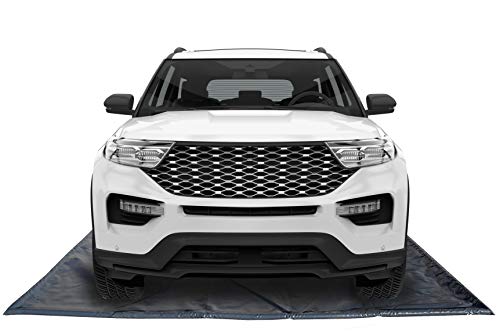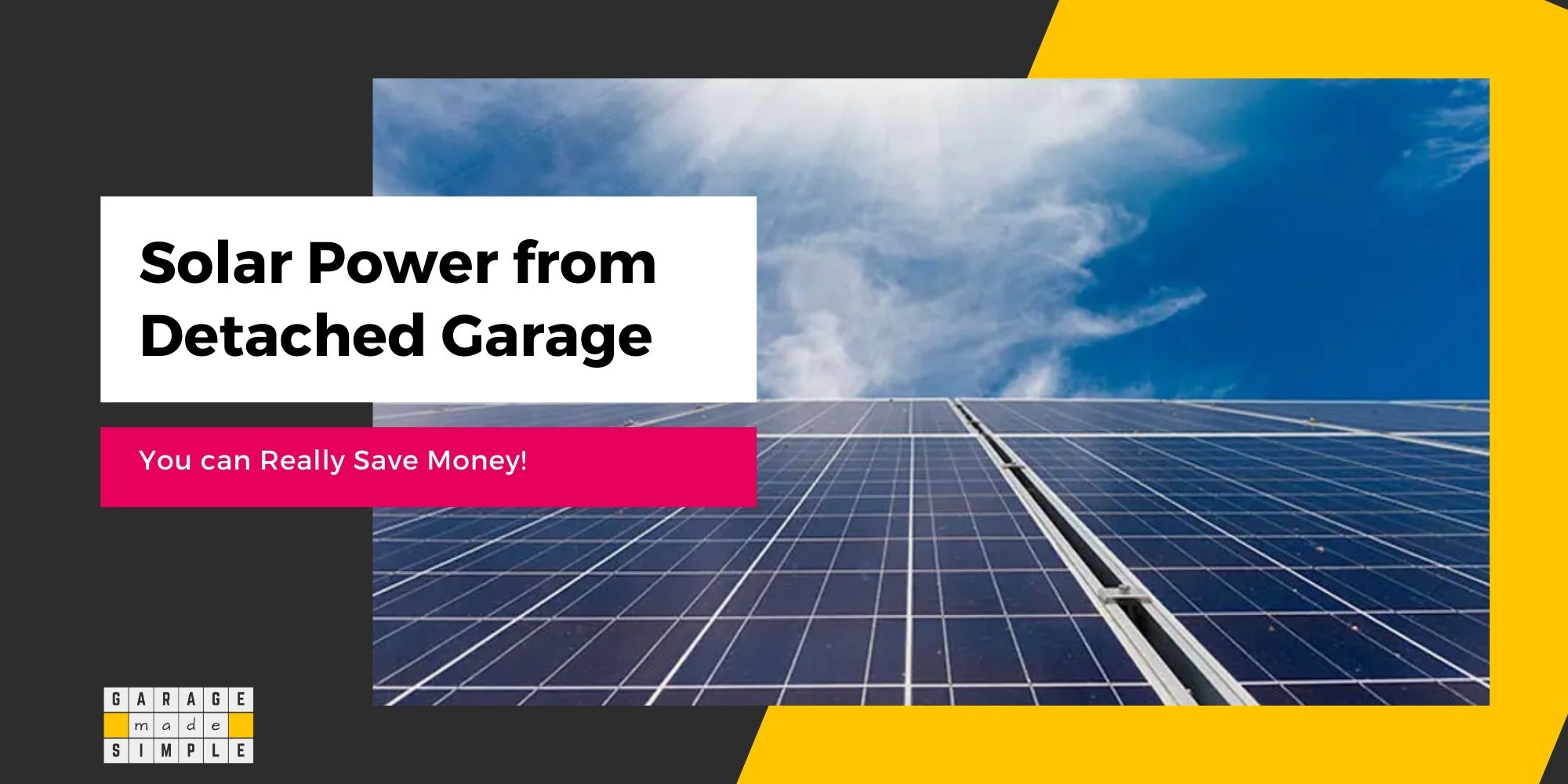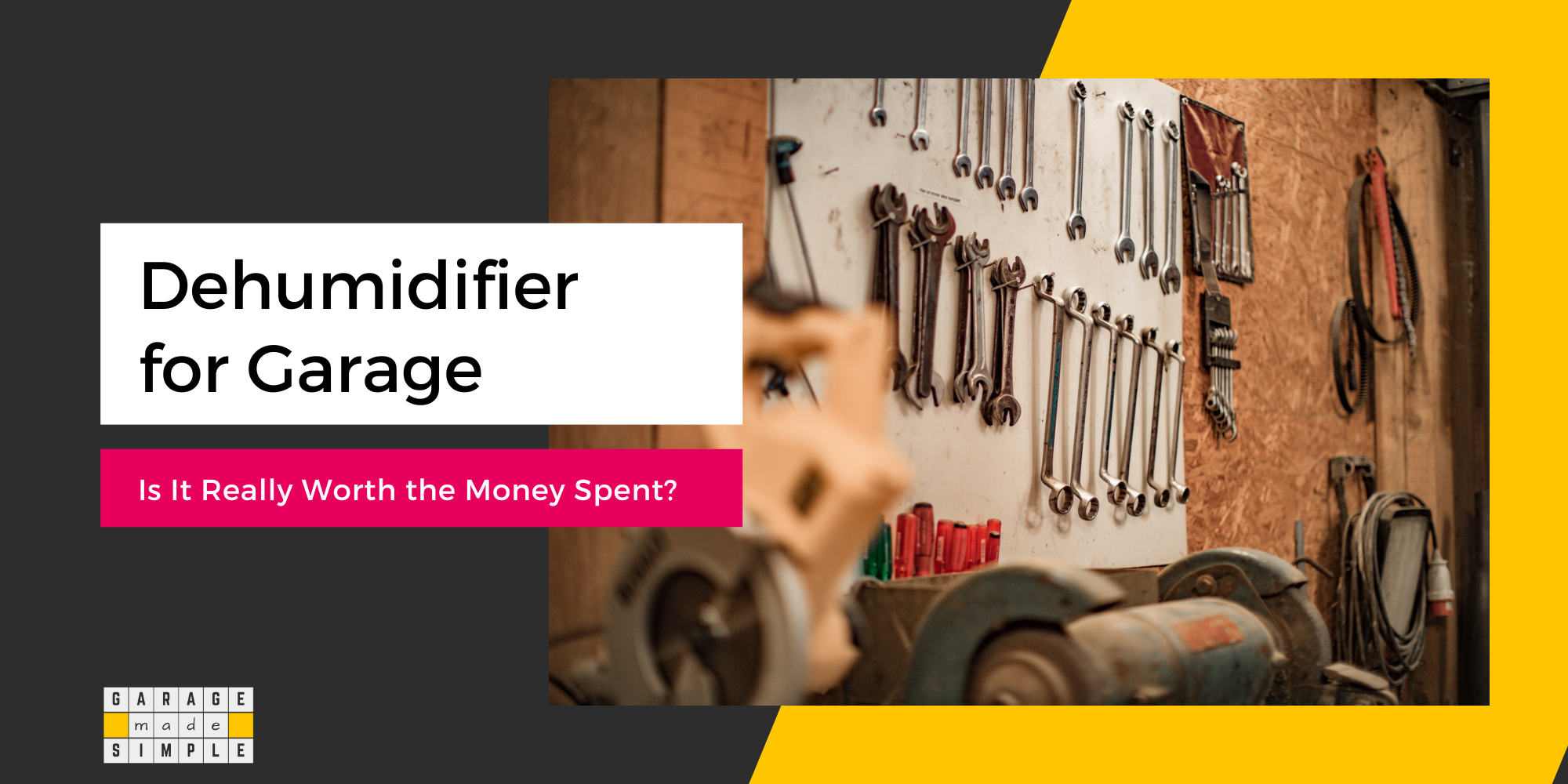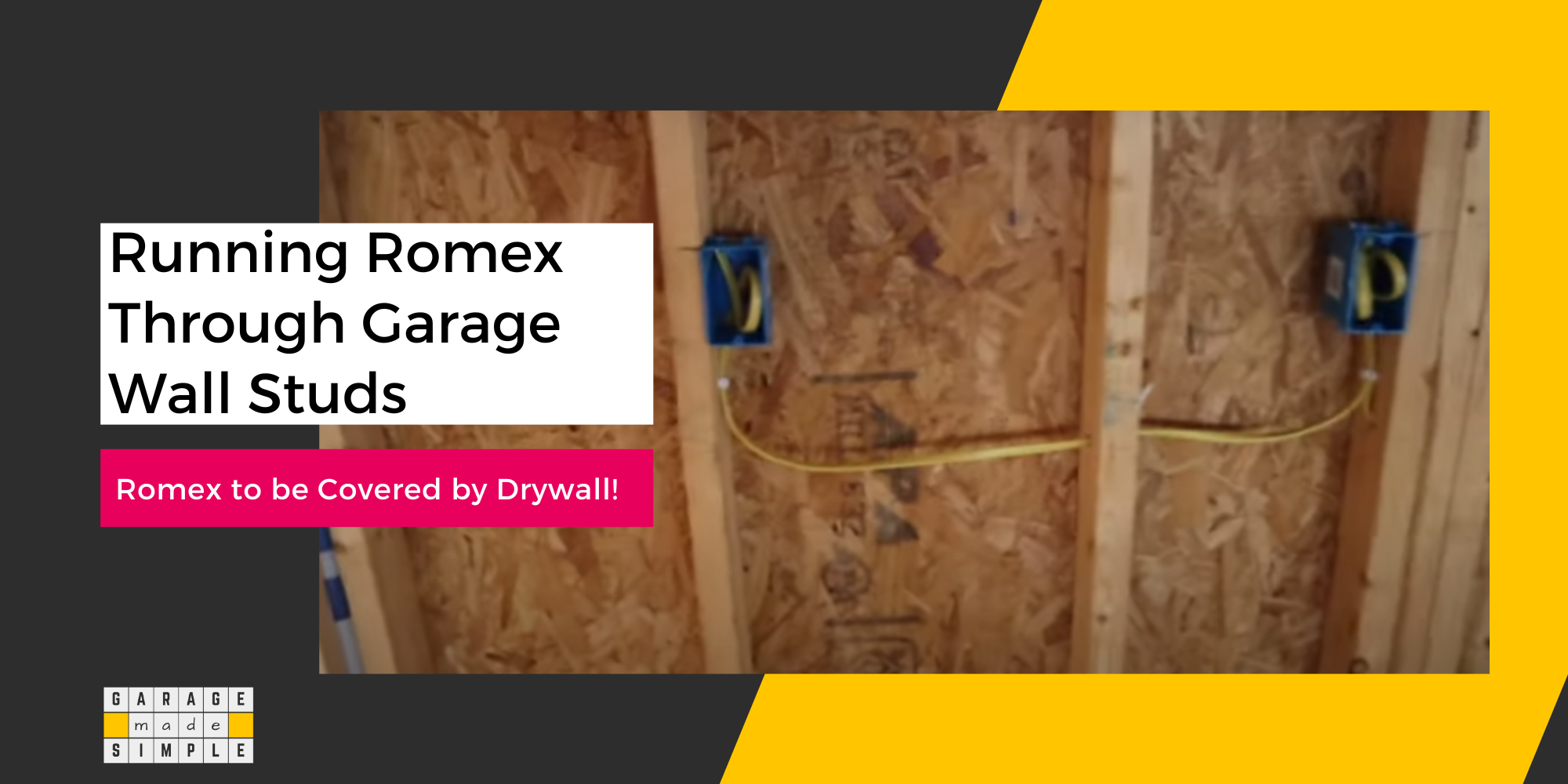Garage Floor Water Diverter: Best Way To Keep Water Out in 2024
As an Amazon Associate, I earn from qualifying purchases.
What is a Garage Floor Water Diverter?
A garage floor water diverter, as the name suggests, is used to divert rainwater flowing down the driveway, away from the garage door. It is extremely useful in preventing flooding in the garage.
The garage floor water diverter is typically made of a flexible, yet durable water resistant material, such as, rubber or vinyl. They are generally installed in front of the garage door. Sometimes they may be installed around the perimeter of the garage floor.
A garage floor water diverter is also known by other names such as garage water barrier or garage dam. Garage floor water diverters are a relatively inexpensive and an easy way to protect your garage from flooding & water damage.
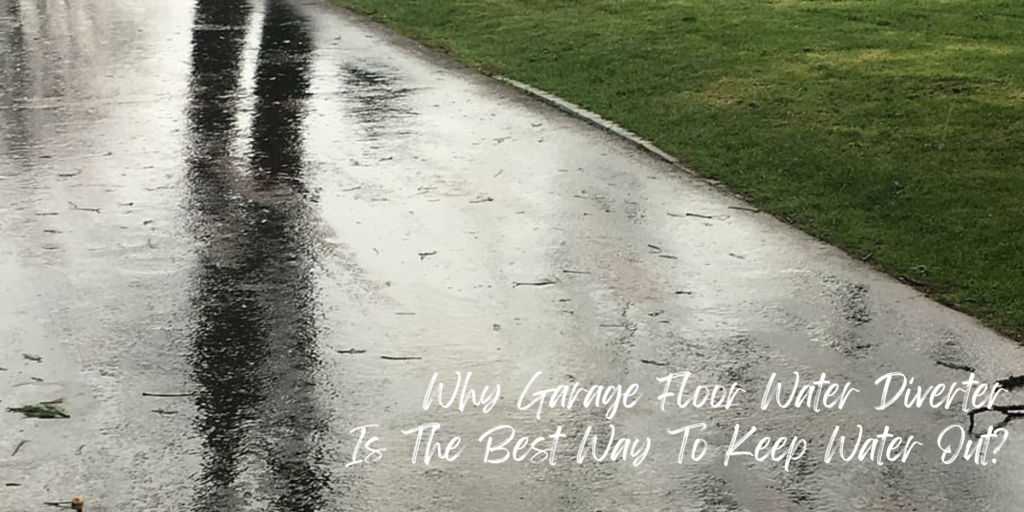
In short a garage floor water diverter:
- Prevents flooding and water damage
- Protects the garage floor and belongings from moisture
- Is relatively inexpensive and easy to install
- Can be used in all types of garages, regardless of size or layout
How do I Stop Water from Coming into my Garage?
The fight for keeping your Garage Floor dry during the rainy & winter months requires you to incorporate four strategies.
- Prevention – Keep the Water Out
- Diversion – Move Water Away
- Containment – Limit the Water Spread
- Clean Up – Get The Water Out
To Keep The Water Out you can brush off the snow from your car, use a water barrier and make sure that all garage door seals are in good condition before the onset of winter.
To Move Water Away, a Garage Floor Water Diverter is an important weapon in your arsenal. You can install drains on the driveway and inside the garage. You can also use drain tiles.
To Limit The Water Spread you can use containment parking mats and flood barriers.
To Get The Water Out you have to go back to the basics. Clean Up as soon as possible. Garage Fans & Blowers are help dry out the floor faster.
Why you should Keep your Garage Floor Dry?
A garage floor that is flooded with water or has water pooled up in some areas, spells a lot of trouble.
Water can be very damaging to the Garage Floor.
- Water on the garage floor, if not sealed, will permeate into the concrete slab and hasten the concrete deterioration
- Water will damage the Furniture & Equipment on the garage floor
- Water, Snow and especially Ice will make the garage floor slippery. This can lead to falls and serious injuries
- Pooled water and damp surfaces invite insects, mosquitoes and encourage growth of mold & mildew. All these are not just irritating and unsightly, they are also health hazards
In this blog post I am going to go into the details of Prevention, Diversion, Containment & Clean Up. I will also cover Garage Floor Water Diverter products in some detail.
So read on, make your garage winter ready, well in advance and save yourself a lot of trouble.
How do I Stop Rain from Coming under my Garage Door? (Prevention)
The biggest hole in your garage water management defense system is the garage door. The garage door takes up almost the entire front of the garage. Water and snow can enter the garage through the door.
Find out now, how to keep water out of garage.
Brush Off Snow & Water
Of course your car will be covered in snow, if you have been driving around or even just parked outside and it has been snowing. When you get back home it is only natural that you want to drive right into your garage and park.
Wait! Do something a little inconvenient first.
Park your car on the driveway first. Take out your handy brush (which you should always keep in the car) and brush off as much of the snow as possible from the car roof, windshields and even the tires.
This little chore will save you from a lot of garage floor cleaning later. Not just snow, do this even with water & mud if you have been driving around in rain.
Garage Water Barrier
Water will also flow in from the driveway into your garage, every time you open the garage door. The water may be rain water or just snow melting on the driveway. Hopefully, this is not a flood.
Yet it is probably enough to wet your garage floor, possibly form a puddle.
Garage Doors typically have a Bottom Seal and a Bottom Threshold Seal. that work in conjunction to seal the lower edge of the garage door, when it is closed.
But the Bottom Threshold Seal may not be tall enough to prevent outside water to come streaming in when the garage door opens. That is why you need

2″ High Garage Door Flood Barrier Threshold
- All-in-one solution that prevents water, wind-driven rain, leaves, dust, vermin, and debris from entering the garage
- Dimensions: 2 inch high x 10 feet 3 inches length x 9 inches width
It will also provide flood protection to your garage or warehouse during heavy rain or stormy weather.
Check All Garage Door Seals
The Garage Door has seals around the perimeter. These are made of flexible materials such as rubber, PVC or silicone. All these materials tend to become brittle with time due to exposure to sunlight and changes in temperature.
They may also be subject to mechanical damages.
So you need to check regularly for their condition. You must definitely do this check before the onslaught of the rainy season or the freezing winter. Do not be caught off guard.
Following seals need to be checked and replaced if they are not in good condition:
- Bottom Seal
- Bottom Threshold Seal
- Top & Side Seals
- In-between Panel Seals
How do I Divert Water from my Garage? (Diversion)
The technique of moving the water away from the garage floor and into the storm water drain is essentially the Garage Floor Water Diverter technique.
Driveway Trench Drainage
A garage should always have a drain system if possible. Some have, some don’t. Some want to have but can’t because the local building codes won’t allow. But we will come to this point later.
Here I want to talk about a drain, specifically a trench drain outside the garage door and parallel to it. This is different from a high garage door threshold seal. It is not just a barrier to the entry of water.
It is a way to actually divert the rain water or the snow melt off from the driveway into the storm water drain.
The standard trench drains have grated covers. Source 1 Drainage Trench & Driveway Channel Drain with Concrete Grey Grate available at Amazon may be worth considering.
I really like the modern look trench drain from U-drain a company from Canada. The SINGLE SLOT INTAKE has revolutionized the trench drain industry. It has a sleek look and is far easier to maintain. The benefits of U-drain are:
- Once your concrete has been poured, U-drain™ is fully encased, only the slot is visible. This provides a sleek finish.
- U-drain™ has no grates to get clogged and dirty looking, making it an excellent choice for garage floor drainage, poolside drainage, patio drainage and more.
- There are no grates in the floor drainage system to plug, remove and clean. The intake of the drain is its simple slot.
- If the floor drain could use a cleaning, simply insert the cleaning paddle and run it along the length of the drain to the sump pit.
- The U-drain™ features a sump pit that is designed to be plumbed out to either a weeping tile or some other form of drainage so that all drain water is disposed of efficiently.
- Residential U-drain™ has an ADA compliant 1/2″ slot opening.
- Residential U-drain™ sits flush with the floor surface and does not pose a tripping hazard for foot traffic.
Parking Perimeter Trench Drainage
You can use the SINGLE SLOT INTAKE U-drain inside the garage too, if the building code in your area will permit.
If you have the time and the money to spend on this project, a very neat idea would be to put the U-drain in a rectangular shape in the spot meant for car parking.
This way the rainwater drip and the snow melt runoff from the car would go straight into the drain leaving the balance garage floor pretty much dry.
Of course you must ensure that the garage floor has a slight slope towards the drain so that water always flows towards it.
Vented Garage Floor Tiles
On the other hand you may already have a drain system in your garage floor. In this case using Vented Interlocking High Impact Polypropylene Garage Floor Tiles is very helpful.
The Vented Garage Floor Tiles (aka Drain Tiles) are designed for maximum water drainage.
So they should be used in the parking area of the garage floor that gets wet often, or in northern states, where you often pull into the garage with snow on the car.
They are made out of high-impact polypropylene. This is a material that is light-weight but strong enough to withstand heavy vehicles such as SUV’s or Two-Ton Trucks.
The Drain Tiles can be easily cleaned using a shop vacuum. I recommend Vented Grid-Loc Tiles.
The tiles are 12” squares, come in multiple colors and have three top options (Coin Top, Diamond Top & Perforated Top). The garage floor tiles are designed to interlock with each other, so you can build a garage floor unique to your needs & aesthetic taste.
- Specially sized vents won’t trap debris and dirt.
- Slip and stain-resistant.
- 12-year warranty.
NOTE: Garage Floor Drains must empty into the sewage system of your locality and not the storm water system. Perimeter drains (water diverters) will generally be permitted to empty into the storm water system. They may also be permitted (in special cases) to drain the water to daylight.
How do I Stop Water from Pooling in my Garage? (Containment)
In spite of prevention and diversion, some water will still get into your garage and will form water pools all over. Worse, you may have slippery ice, dirty snow and muddy slush all over your beautiful garage floor.
You can limit the spread of water by using containment parking mats and / or garage flood barriers.
Containment Parking Mats
If a drainage system is not permitted by the local area building code or you are not yet ready for a large scale garage project, you can choose a simpler option. Containment Parking Mat. They are also called Garage Floor Snow Mats sometimes,
Containment Parking Mats are made of high-quality, abrasion resistant flexible polymer.
They come in a box so all you have to do is unpack them and lay them on the garage floor in the exact area you will park your vehicle. The mats are secured to the garage floor using velcro strips. The mat stays in place and collects, captures and contains the ice, snow, water, mud, etc. that drip from your car.
The containment mats include built-in containment edges and can collect and hold gallons of slush & water. You can step out of the car onto a spotless, dry garage floor. The slush collected in the containment mat can be cleaned out, when required using a shopvac.
Order a TruContain Garage Floor Snow Mat from Amazon now.
Flood Barriers
Garage Floor Water Dam is an ingenious garage floor water diverter and containment product. They can be used anywhere, outside on the driveway leading to the garage door or inside on the garage floor to contain water in a limited area.
I recommend Quick Dam – QD1224-6 Water Activated Flood Bags. The special features are:
- Water Activated Polypropylene Flood Bags
- Grows to 3.5in high in minutes once wet
- Compact & Lightweight, stores away until needed
- Use to control, contain & divert flood water
How do I keep my Garage Floor Dry in the Winter? (Clean Up)
Hopefully, if you have implemented some of the above ideas for prevention, diversion and containment of water and snow, your garage floor should be pretty dry on most of the days.
But there will be times when you will have to clean up.
Garage Ceiling Fan or Blower Fan
Investing in a ceiling fan or a blower fan for your garage will of course make your garage a lot more comfortable in the summer. But the fan comes in handy in winter too. The breeze from the fan will hasten the evaporation of water on the garage floor. Your garage floors will dry out faster.
Clean Up Immediately
You should Clean Up the water puddles on the garage floor as soon as possible. Painful as it may seem, do it the same day, after an hour or two of parking your car.
The water will still be water and can be easily pushed towards the drain with a squeegee or scooped up by a shopvac.
Leave it overnight and you may have to deal with a slippery, icy garage floor!
Bottom Line
There are four ways to ensure that your garage floor is dry most of the time during the freezing winter months.
- Prevention
- Diversion
- Containment
- Clean Up
So use a Garage Floor Water Diverter and any of the other ways in this post to ensure your garage floor is never damp.
I do hope you and your garage floor have a dry and safe winter this year!
Thank you very much for reading the post. I do hope you found it informative and useful.



